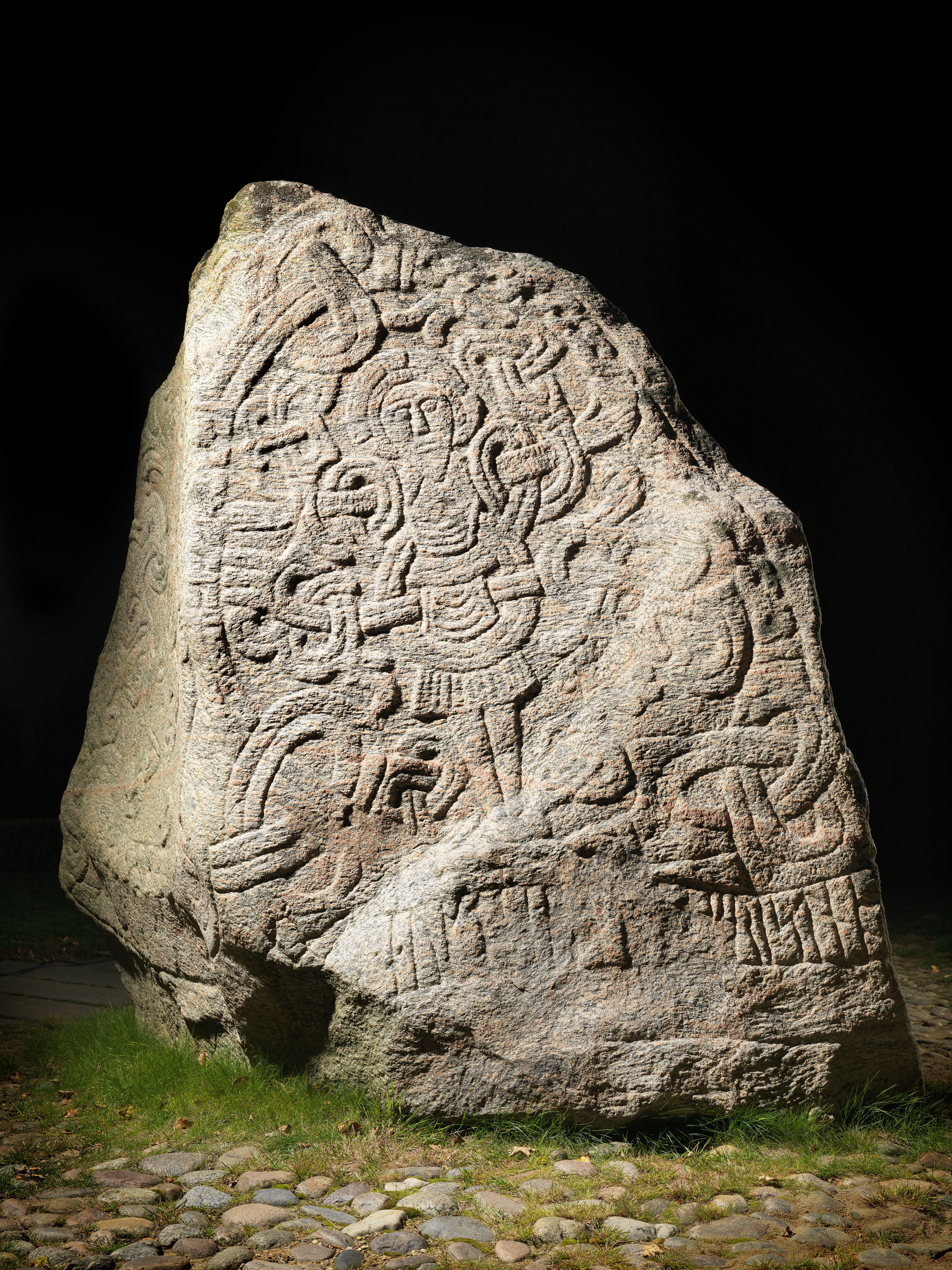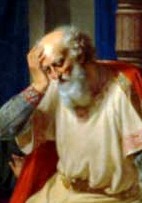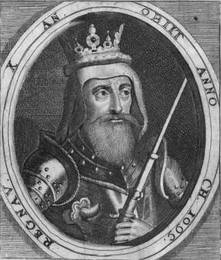|
Gerhard III, Count Of Holstein-Rendsburg
Gerhard III of Holstein-Rendsburg ( – 1 April 1340), sometimes called Gerhard the Great, and in Denmark also known as ''Count Gert'' or ''den kullede greve'' ("the bald count"), was a German prince from the Schauenburg family who ruled Holstein-Rendsburg and a large part of Denmark during the interregnum of 1332–40. His father was Henry I, Count of Holstein-Rendsburg (c. 1258 – 5 August 1304). Gerhard inherited his part of the county of Holstein as a boy. While he was a young man, he enlarged his inheritance by manoeuvring out his relatives and by his conquest of other parts of Holstein. These actions made him a powerful local prince. In these years he also was employed as a paid ''condottiere'' for neighbouring kings including King Eric VI of Denmark. He often partnered with his Holstein cousin Count John III, Count of Holstein-Plön. In 1325 Gerhard began his career in the North by taking over the guardianship for his minor nephew Duke Valdemar of Schleswig. This ... [...More Info...] [...Related Items...] OR: [Wikipedia] [Google] [Baidu] |
House Of Schaumburg
The House of Schaumburg was a dynasty of German rulers. Until , it was also known as the House of Schauenburg. Together with its ancestral possession, the County of Schaumburg, the family also ruled the County of Holstein and its partitions Holstein-Itzehoe, Holstein-Kiel, Holstein-Pinneberg (till 1640), Holstein-Plön, Holstein-Segeberg and Holstein-Rendsburg (till 1460) and through the latter at times also the Duchy of Schleswig. History The Schaumburgs were named after Schauenburg Castle, near Rinteln on the Weser, where the owners started calling themselves Lords (from 1295 Counts) of Schauenburg. Adolf I probably became the first Lord of Schauenburg in 1106. In 1110, Adolf I, Lord of Schauenburg was appointed by Lothair, Duke of Saxony to hold Holstein and Stormarn, including Hamburg, as fiefs.Lemma Schauenburg/Schaumburg. In: Klaus-Joachim Lorenzen-Schmidt, Ortwin Pelc (Hrsg.): ''Schleswig-Holstein Lexikon''. 2. Aufl., Wachholtz, Neumünster, 2006. Holstein was oc ... [...More Info...] [...Related Items...] OR: [Wikipedia] [Google] [Baidu] |
Niels Ebbesen
Niels Ebbesen (1308 – 21 November 1340) was a Denmark, Danish squire and folk hero, national hero, known for assassinating Gerhard III, Count of Holstein-Rendsburg in 1340. From 1332 to 1340, Count Gerhard was the lord of both Jutland and Funen. His death meant the end of Holstein rule in Denmark. Biography Little is known of Ebbesen's background. He seems to have belonged to the Jutland gentry. Like many other of his class, he probably supported the Holstein occupiers during the years of chaos, but later turned against them and when Gerhard III, Count Gerhard campaigned in Jutland in 1340, Ebbesen supported the Jutland guerrilla warfare, guerrillas. On 1 April 1340, Ebbesen and 47 of his warriors entered Randers and hid until nightfall. They got into the Count's headquarters and entered his bedroom. They cut off the count's head over the end of the bed. Not wishing for the act to be secret, Ebbesen's men beat a drum and shouted that the Count had been executed. When the Hols ... [...More Info...] [...Related Items...] OR: [Wikipedia] [Google] [Baidu] |
Valdemar IV Of Denmark
Valdemar IV Atterdag, Valdemar Christoffersen or Waldemar (24 October 1375) was King of Denmark from 1340 to 1375. He is mostly known for his reunion of Denmark after the bankruptcy and mortgaging of the country to finance wars under previous rulers. He gradually reacquired the lost territories that had been added to Denmark over the centuries. His heavy-handed methods, endless taxation, and usurpation of rights long held by noble families led to uprisings throughout Valdemar's reign. Accession He was the youngest son of King Christopher II of Denmark and Euphemia of Pomerania. He spent most of his childhood and youth in exile at the court of Emperor Louis IV in Bavaria, after the defeats of his father and the death and imprisonment, respectively, of his two older brothers, Eric Christoffersen of Denmark, Eric and Otto, Duke of Lolland and Estonia, Otto, at the hand of the Holsteiners. Here he acted as a pretender, waiting for a comeback. Following the assassination of Gerhard II ... [...More Info...] [...Related Items...] OR: [Wikipedia] [Google] [Baidu] |
King Of Denmark
The monarchy of Denmark is a constitutional political system, institution and a historic office of the Kingdom of Denmark. The Kingdom includes Denmark proper and the autonomous administrative division, autonomous territories of the Faroe Islands and Greenland. The Kingdom of Denmark was already consolidated in the 8th century, whose rulers are consistently referred to in Franks, Frankish sources (and in some late Frisians, Frisian sources) as "kings" (). Under the rule of King Gudfred in 804 the Kingdom may have included all the major Lands of Denmark, provinces of medieval Denmark. The current unified Kingdom of Denmark was founded or re-united by the Vikings, Viking kings Gorm the Old and Harald Bluetooth in the 10th century. Originally an elective monarchy, it became hereditary monarchy, hereditary only in the 17th century during the reign of Frederick III of Denmark, Frederick III. A decisive transition to a constitutional monarchy occurred in 1849 with the writing of th ... [...More Info...] [...Related Items...] OR: [Wikipedia] [Google] [Baidu] |
List Of Danish Monarchs
This is a list of Monarchy of Denmark, Danish monarchs, that is, the kings and queen regnants of Denmark. This includes: * The Kingdom of Denmark (up to 1397) ** Personal union of Denmark and Norway (1380–1397) * The Kalmar Union (1397–1536) ** Union of Denmark, Norway and Sweden (1397–1523) ** Union of Denmark and Norway (1523–1536/1537) * The United Kingdoms of Denmark–Norway (1536/1537–1814) * The Kingdom of Denmark (1814–present) ** Iceland (since the union between Denmark and Norway in 1380; independent kingdom in a personal union with Denmark 1918–1944; a sovereign republic since 1944) ** Greenland (since the union between Denmark and Norway in 1380; effective Danish–Norwegian control began in 1721; integrated into the Danish realm in 1953; internal home rule introduced 1979; Self-governance, self-rule assumed in 2009; Greenland has two out of 179 seats in the Danish parliament Folketinget) ** Faroe Islands (since the union between Denmark and Norway in 138 ... [...More Info...] [...Related Items...] OR: [Wikipedia] [Google] [Baidu] |
List Of Dukes Of Schleswig
The following is a list of jarls and dukes, who ruled over Schleswig respectively Southern Jutland (Sønderjylland). First jarls/dukes House of Estridsen (1080–1375) House of Schauenburg (1325-1459) Under domain of Oldenburg In 1459, after the annexation of both Schleswig and Holstein, Christian I of Denmark created two separate states: the Duchy of Schleswig and Duchy of Holstein, to be ruled by two different branches of the House of Oldenburg over the next few centuries. In 1864, following the Second Schleswig War, the Duchy of Schleswig-Holstein became an occupied territory of the German Confederation and two years later, following the Austro-Prussian War, part of the new Prussian Province of Schleswig-Holstein. See also *List of Danish monarchs This is a list of Monarchy of Denmark, Danish monarchs, that is, the kings and queen regnants of Denmark. This includes: * The Kingdom of Denmark (up to 1397) ** Personal union of Denmark and Norway (1380–13 ... [...More Info...] [...Related Items...] OR: [Wikipedia] [Google] [Baidu] |
William II, Duke Of Brunswick-Lüneburg
William II, Duke of Brunswick-Lüneburg (about 1300 – 1369) was the Prince of Lüneburg from 1330 to 1369. Life Joint rule with Otto III William was born around the year 1300 as the fourth child of Otto the Strict and his wife, Matilda of Bavaria. On his father's death, William took over the reins of state jointly with his brother Otto III. This was against his father's will because Otto II had wanted the state to be divided after his death. The focus of the brothers' reign in the early years was the territorial consolidation of the principality. For example, they succeeded in expanding their estate in the area of Gifhorn considerably through the acquisition of the village of Fallersleben and the counties of Papenheim and Wettmarshagen. Another focus of attention was their political support of economically growing towns. For example, Lüneburg trade flourished as a result of work to make the Ilmenau navigable between Lüneburg and Uelzen as well as trade agreements between the ... [...More Info...] [...Related Items...] OR: [Wikipedia] [Google] [Baidu] |
Nicholas, Count Of Holstein-Rendsburg
Nicholas, Count of Schauenburg and Holstein-Rendsburg (also known as '' Claus of Holstein''; 1321 – 8 May 1397 in Itzehoe) was a titular Count of Schauenburg. Together first with his brother and then with his nephews, Nicholas was the co-ruling Count of Holstein-Rendsburg from 1340 until his death. In 1390 Nicholas and his nephews inherited Holstein-Kiel, which itself included former Holstein-Plön through reversion in 1350. So except of Holstein-Pinneberg Nicholas and his nephews had united all of Holstein. He was also co-ruler of Schleswig from 1375 to 1386. He was thus a leading member of the House of Schauenburg and an influential figure in the area north of the Elbe. He was the second son of Count Gerhard III of Holstein-Rendsburg and his wife, Sophia of Werle. He ruled Schleswig jointly with his elder brother Henry II from 1375 to 1384, thereafter alone. In 1386, he abdicated as Duke of Schleswig in favour of Henry II's son Gerhard VI of Holstein-Rendsburg, who was c ... [...More Info...] [...Related Items...] OR: [Wikipedia] [Google] [Baidu] |
Henry II, Count Of Holstein-Rendsburg
Count Henry II of Holstein-Rendsburg (nickname ''Iron Henry''; – ) was count of Holstein-Rendsburg and pledge lord of Southern Schleswig. He ruled jointly with his younger brother, Count Nicholas (d. 1397). Life Henry was the elder son of Count Gerhard III and Sophia of Werle. Henry was a major European player as a mercenary leader and a typical representative of the late medieval knighthood. He fought in Italy, Russia, Estonia and France. He served in the English and Swedish armies. In 1367, he was commander of a fleet of the Hanseatic League and in 1368, he conquered Copenhagen. Count Henry II and his brother Nicholas vigorously defended their claims in Holstein and Schleswig, against Denmark and against the Frisians. Marriage and issue Henry was married twice: # Matilda (d. 1365), the daughter of Bernard V, Lord of Lippe. They had one daughter: ## Matilda (documented on March 12, 1365) # 1366 Ingeborg (d. 25 Jul 1395), daughter of Albert II, Duke of Mecklenbu ... [...More Info...] [...Related Items...] OR: [Wikipedia] [Google] [Baidu] |
Eric V Of Denmark
Eric V Klipping (1249 – 22 November 1286) was King of Denmark from 1259 to 1286. After his father Christopher I died, his mother Margaret Sambiria ruled Denmark in his name until 1266, proving to be a competent regent. Between 1261 and 1262, the young King Eric was a prisoner in Holstein following a military defeat. Afterwards, he lived in Brandenburg, where he was initially held captive by John I, Margrave of Brandenburg (c. 1213–1266). During his reign, he enforced his power successfully over the church but failed to do so on the nobility, he offended the nobles and was thereby forced to accept a charter ('' Håndfæstning'') which limited his authority while confirming the rights of the nobles. Nickname The king's nickname "Klipping" or "Glipping" refers to a medieval coin that has become "clipped" (a "clipped penny") or cut in order to indicate devaluation. The nickname is an unkind reference to his lack of trustworthiness. He "short-changed" his people and the monarch ... [...More Info...] [...Related Items...] OR: [Wikipedia] [Google] [Baidu] |




